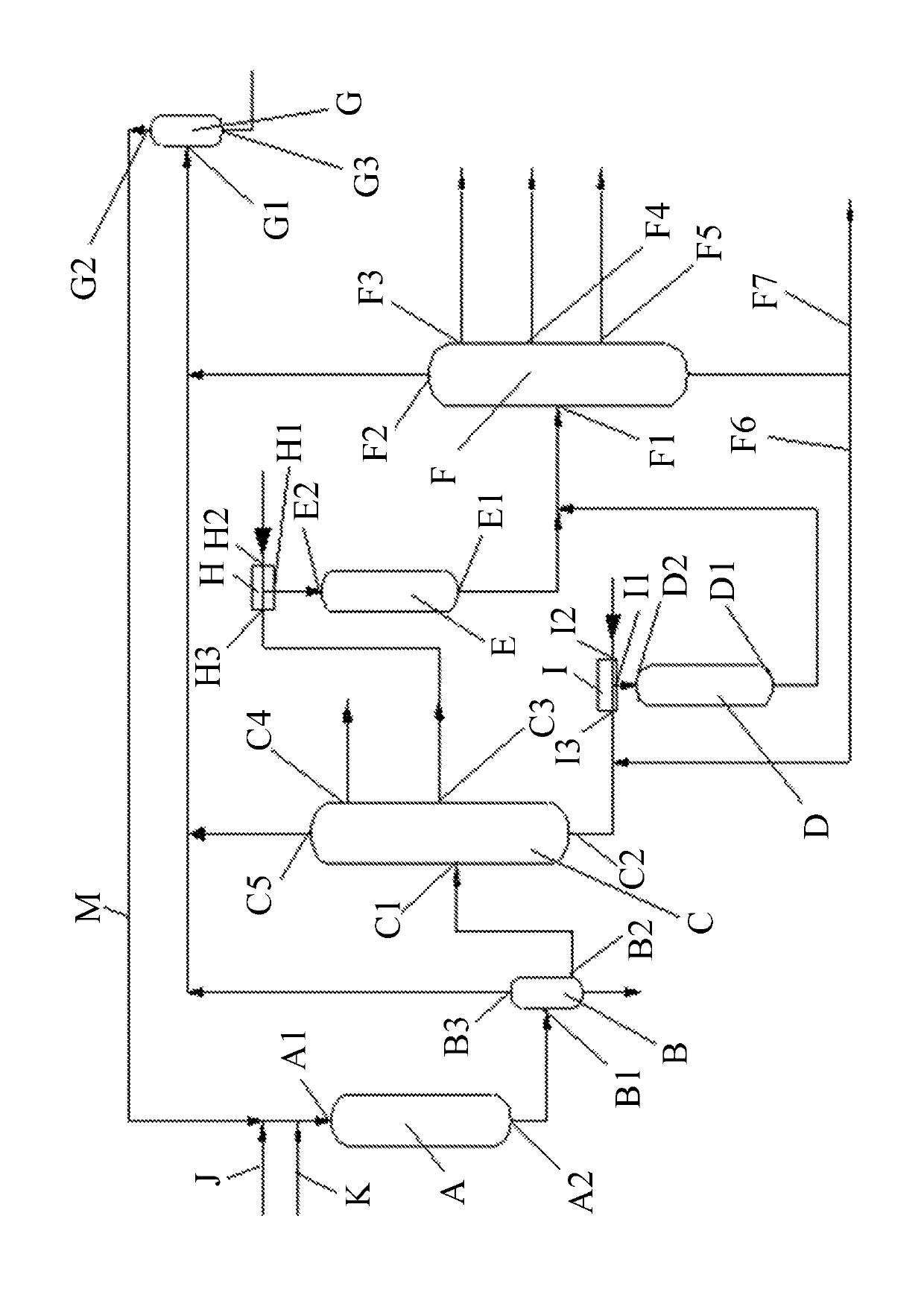Apparatus and method for producing diesel fuel and jet fuel using Fischer-Tropsch synthetic oil
a technology of synthetic oil and diesel fuel, which is applied in the direction of hydrocarbon oil cracking, hydrocarbon oil treatment products, chemical/physical/physicochemical processes, etc., can solve the problems of increasing investment and maintenance costs, affecting the stability and service life of catalysts, and a large amount of synthetic crude oil hydrocarbons and oxygenated compounds, etc., to achieve the highest reduce cracking reactions, and achieve high yield of diesel and aviation kerosen
- Summary
- Abstract
- Description
- Claims
- Application Information
AI Technical Summary
Benefits of technology
Problems solved by technology
Method used
Image
Examples
example 1
[0072]The raw materials of the embodiment are low-temperature synthetic oil and the high-temperature synthetic oil. The ratio of the low-temperature synthetic oil to the high-temperature synthetic oil is 1:1. The operating conditions of the hydrocracking reactor D are as follows: the reaction pressure is 5 MPa; the reaction temperature is 340° C., the liquid hourly space velocity is 0.8 h−1 and the volume ratio of hydrogen to oil is 700:1. The operating conditions of the hydroisomerization reactor E are as follows: the reaction temperature is 330° C., the reaction pressure is 5 MPa, the liquid hourly space velocity is 0.5 h−1 and the volume ratio of hydrogen to oil is 700:1. The hydrofining and hydrocracking sections serve as comparison tests. The operating conditions and product properties are listed in Tables 2 and 3.
[0073]
TABLE 2Operating Conditions in Example 1 and Comparison exampleComparison ItemsExample 1exampleTechnical ProcessPartial Circulation Partial Circulation of the T...
example 2
[0075]The raw materials of the embodiment are low-temperature synthetic oil and the high-temperature synthetic oil. The ratio of the low-temperature synthetic oil to the high-temperature synthetic oil is 2:1. The operating conditions of the hydrocracking reactor D are as follows: the reaction pressure is 7 MPa; the reaction temperature is 375° C., the liquid hourly space velocity is 1.3 h−1 and the volume ratio of hydrogen to oil is 900:1. The operating conditions of the hydroisomerization reactor E are as follows: the reaction temperature is 350° C., the reaction pressure is 7 MPa, the liquid hourly space velocity is 1.0 h−1 and the volume ratio of hydrogen to oil is 900:1. The hydrofining and hydrocracking sections serve as comparison tests. The operating conditions and product properties are listed in Tables 4 and 5.
[0076]
TABLE 4Operating Conditions in Example 2 and Comparison exampleComparison ItemsExample 2exampleTechnical ProcessFull Circulation Full Circulation of the Tail Oi...
PUM
| Property | Measurement | Unit |
|---|---|---|
| temperature | aaaaa | aaaaa |
| temperature | aaaaa | aaaaa |
| reaction temperature | aaaaa | aaaaa |
Abstract
Description
Claims
Application Information
 Login to View More
Login to View More - R&D
- Intellectual Property
- Life Sciences
- Materials
- Tech Scout
- Unparalleled Data Quality
- Higher Quality Content
- 60% Fewer Hallucinations
Browse by: Latest US Patents, China's latest patents, Technical Efficacy Thesaurus, Application Domain, Technology Topic, Popular Technical Reports.
© 2025 PatSnap. All rights reserved.Legal|Privacy policy|Modern Slavery Act Transparency Statement|Sitemap|About US| Contact US: help@patsnap.com

